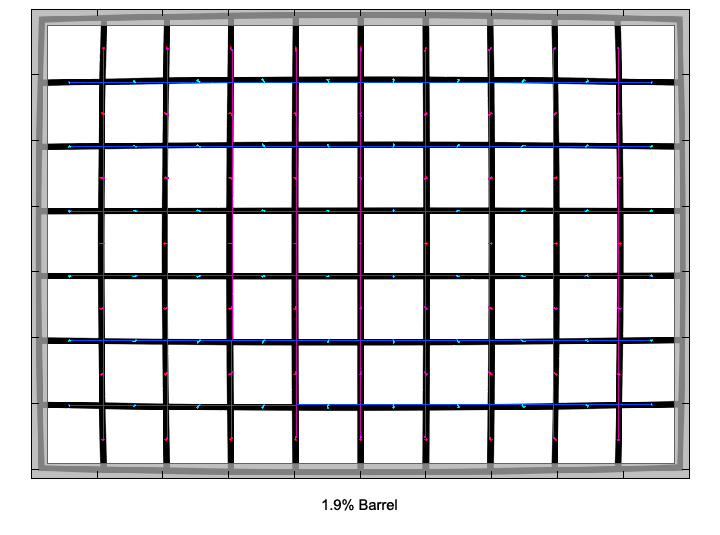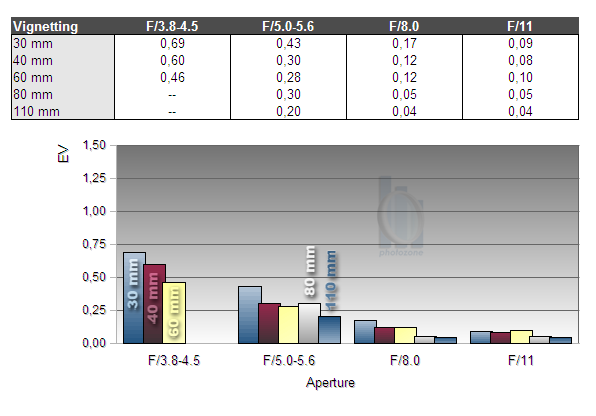|
Page 2 of 3

Distortion
The Nikkor shows a fairly typical distortion characteristic for this kind of tele zoom. There is quite pronounced barrel distortion at the short end, which very soon flips over to moderate pincushion type distortion for most of the longer focal lengths. The two types of distortion even out at around 40mm, where the lens delivers practically distortion-free images.
|
Move the mouse cursor over the focal length text marks below to observe the respective distortion
|
| 30mm |
40mm |
60mm |
80mm |
110mm |
|

|
The chart above has a real-world size of about 120x80cm.
Vignetting
Vignetting is unsurprisingly most pronounced wide open at the short end of the zoom range. As usual, stopping down reduces the amount of light fall-off towards considerably, from f/5.6 onwards it's not an issue anymore for most real-world subjects.
The chart below shows the vignetting characteristic based on NEFs converted by RAW Developer, which does not apply any correction.

Unlike distortion, Nikon chose to have vignetting corrected in the camera when shooting JPG (or using Nikon's View NX or Capture NX software to convert NEFs). The chart below shows the vignetting based on the same images as the previous chart, but automatically corrected by the camera firmware.

MTF (resolution)
The lens delivers impressive results in our lab. For most of the focal range the center resolution is excellent straight from the largest apertures. The borders perform on a similarly high level, also reaching excellent resolution figures in the range of 30mm to 80mm.
The extreme corners are visibly softer wide open at 30mm and 40mm, the lens needs to be stopped down to f/5.6 to reach very good resolution here. At 60mm and 80mm the extreme corners deliver much better resolution.
Unfortunately, the high performance level is not maintained towards the longest focal length, where the resolution drops by roughly one mark on our scale.
Please note that the MTF results are not directly comparable across the different systems!
Below is a simplified summary of the formal findings. The chart shows line widths
per picture height (LW/PH) which can be taken as a measure for sharpness.
If you want to know more about the MTF50 figures you may check out the corresponding
Imatest Explanations

Chromatic Aberrations (CAs)
Lateral CAs (color shadows at harsh contrast transitions) are generally well controlled, reaching moderate values at both ends of the zoom range and very low amounts at medium focal length settings.
CAs can easily be corrected in software, in fact the Nikon 1 cameras automatically do so if you shoot JPGs.

|